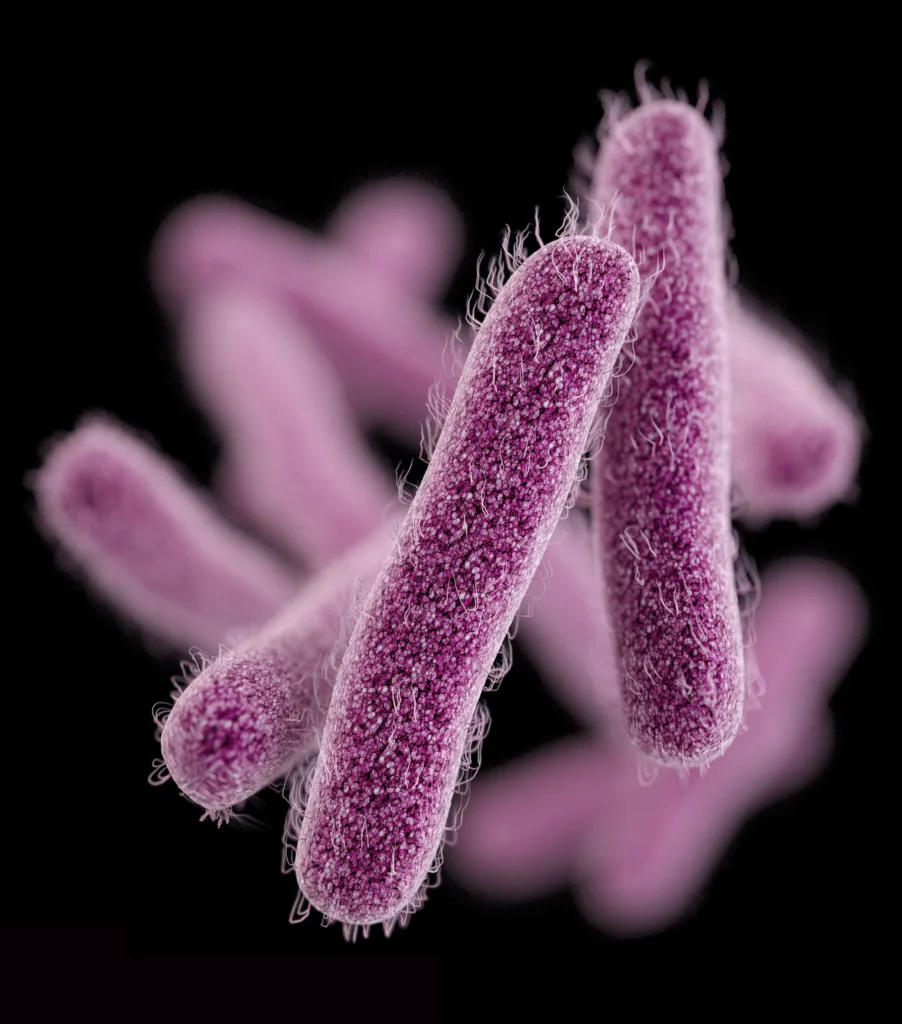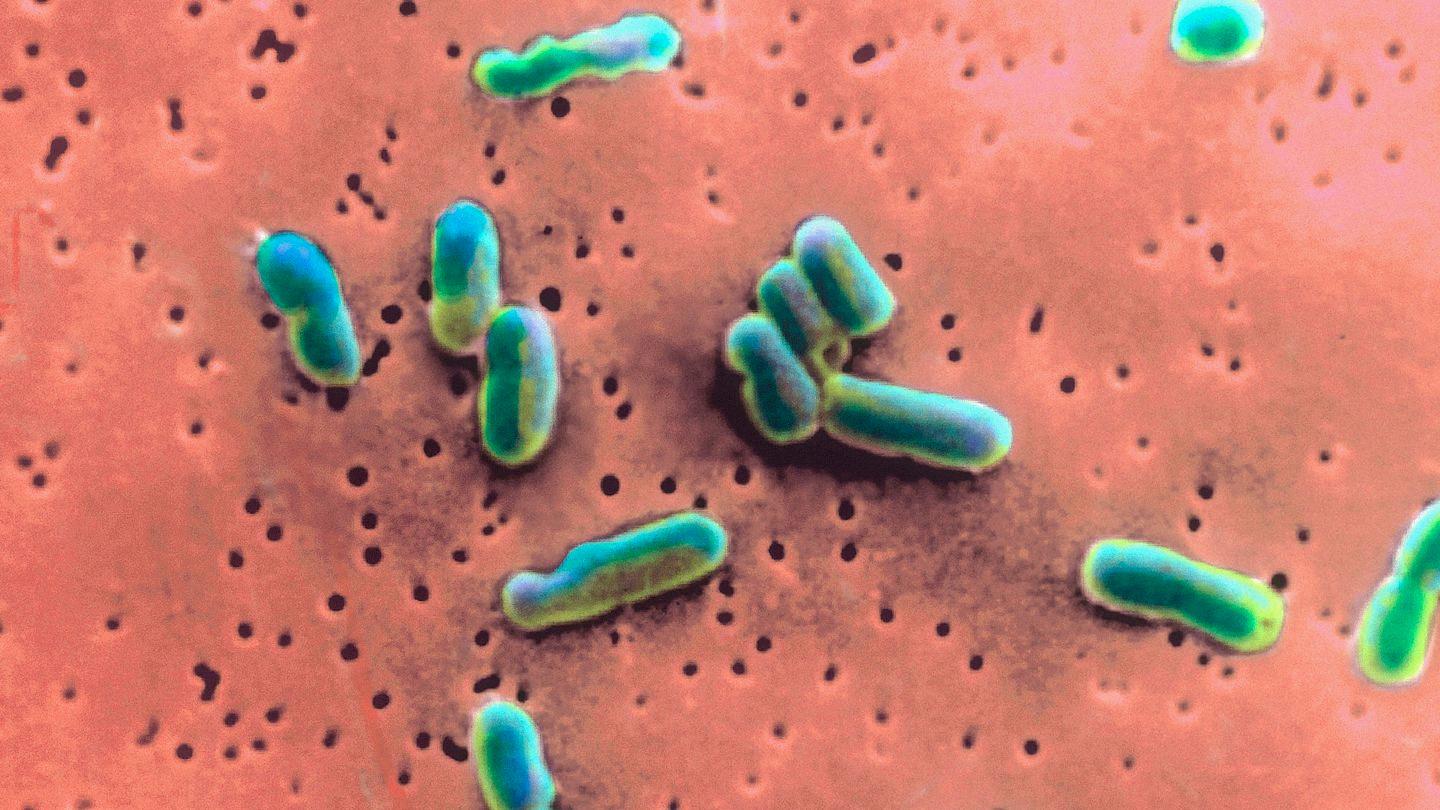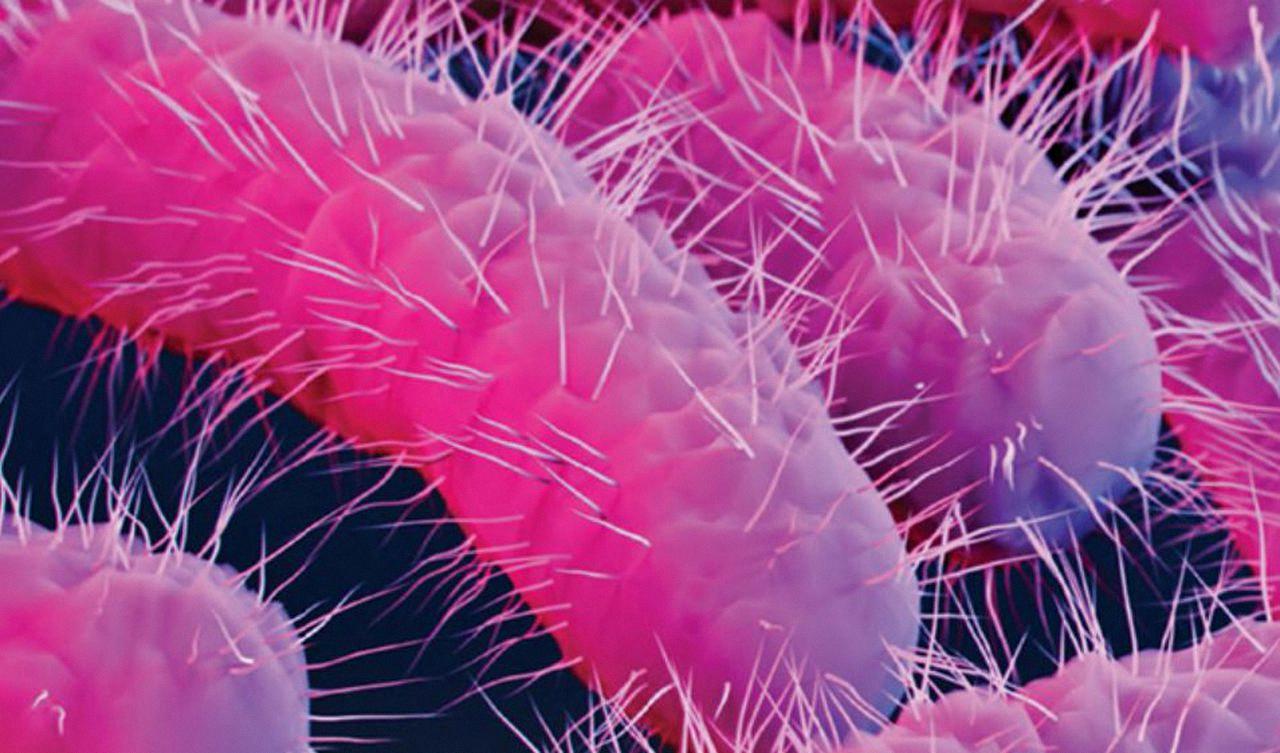Shigella is a genus of gram-negative bacteria that causes a wide range of gastrointestinal diseases in humans. The bacteria are commonly found in contaminated water and food and can case severe illness, including dysentery, diarrhea, and fever. One of the distinguishing features of Shigella is its inability to ferment lactose. In this blog post, we will explore the reasons behind Shigella’s inability to ferment lactose and the implications of this on its virulence.
To understand why Shigella cannot ferment lactose, we need to look at the genetics of the bacteria. Lactose fermentation is mediated by a group of genes known as the lac operon. This operon consists of three genes, lacZ, lacY, and lacA, which encode for the enzymes required for lactose metabolism. The lacZ gene encodes for beta-galactosidase, which breaks down lactose into glucose and galactose. The lacY gene encodes for a lactose permease, which transports lactose into the cell. The lacA gene encodes for a transacetylase, which is involved in detoxifying lactose metabolites.
Shigella lacks the lacY gene, which encodes for the lactose permease. Without this gene, Shigella is unable to transport lactose into the cell, which is a crucial step in lactose metabolism. As a result, Shigella cannot ferment lactose, and the bacteria do not produce the acid and gas byproducts that are typically associated with lactose fermentation.
The inability to ferment lactose has significant implications for Shigella’s virulence. Lactose is a common sugar found in many foods, and its fermentation is a key adaptation for bacteria that live in the gastrointestinal tract. By fermenting lactose, bacteria can generate energy and produce acid and gas, which can help them colonize the gut and compete with other microorganisms.
Shigella’s inability to ferment lactose is thought to be a consequence of its adaptation to a pathogenic lifestyle. Shigella is an intracellular pathogen, which means that it can invade and replicate within host cells. By avoiding lactose fermentation, Shigella can avoid triggering the host immune system, which can detect and respond to changes in the gut microbiota. Additionally, Shigella’s inability to ferment lactose may allow it to outcompete other gut bacteria that rely on lactose fermentation for energy.
Shigella does not ferment lactose due to the absence of the lactose permease gene, lacY. This adaptation is thought to be a consequence of Shigella’s pathogenic lifestyle and has significant implications for its virulence. While lactose fermentation is a key adaptation for many gut bacteria, Shigella has evolved to survive and thrive in the absence of lactose fermentation.
Do Shigella and Salmonella Ferment Lactose?
Shigella and Salmonella are two different bacterial species that have some similarities and differences in their metabolic activities. When it comes to lactose fermentation, both Shigella and Salmonella are known to be non-lactose fermenters. This means that they do not possess the necessary enzymes to break down lactose sugar into simpler metabolites that can be utilized for energy production. Instead, they rely on oter carbon sources such as glucose, sucrose, or mannitol to survive and grow.
To differentiate between Shigella and Salmonella, microbiologists often use selective and differential media that contain specific indicators of lactose fermentation, such as the pH indicator phenol red or the sulfur-containing substrate thiosulfate. In such media, Shigella and Salmonella can be identified based on their distinct biochemical reactions. For instance, Salmonella is known to produce hydrogen sulfide gas from thiosulfate, which can be detected as black colonies on the media. Shigella, on the other hand, does not produce hydrogen sulfide and appears as colorless colonies on the media. Thus, while both Shigella and Salmonella are non-lactose fermenters, they can be distinguished by other metabolic and biochemical characteristics.

Fermentation of Lactose by Shigella Species
None of the Shigella species are capable of fermenting lactose. This is a key characteristic used to differentiate Shigella species from other enteric bacteria, such as Escherichia coli, which can ferment lactose. The inability to ferment lactose is due to the absence of the lactose operon in the Shigella genome. Instead, Shigella species rely on other carbon sources, such as glucose, to fuel their metabolism. This trait is important in the diagnosis of Shigella infections, as it is a key factor in the interpretation of various biochemical tests used to identify these bacteria in clinical samples.
Does Shigella Boydii Ferment Lactose?
Shigella Boydii is a species of Gram-negative bacteria that is kown to cause dysentery in humans. In terms of its ability to ferment lactose, it has been reported that some strains of Shigella Boydii can ferment lactose, while others cannot.
Studies have shown that lactose fermentation in Shigella Boydii is often slow and incomplete, and the bacteria may require prolonged incubation periods to produce acid and gas from lactose. This is in contrast to other members of the Shigella genus, such as Shigella flexneri, which are known to ferment lactose more efficiently.
It is important to note that the ability of Shigella Boydii to ferment lactose can vary depending on the strain and the specific conditions in which it is grown. Therefore, it is recommended that appropriate laboratory tests be performed to confirm the lactose-fermenting phenotype of individual strains of Shigella Boydii.
Appearance of Shigella on MacConkey Agar
Shigella, which is a lactose non-fermenting bacterium, appears as colorless and transparent colonies on MacConkey Agar. It typically does not alter the appearance of the medium. This means that Shigella colonies will not produce a pink or red color on the agar, unlike lactose-fermenting bacteria which appear as pink or red colonies. Therefore, to identify Shigella on MacConkey Agar, one needs to look for colonies that are colorless and transparent.
Bacteria That Ferment Lactose
The bacteria that are capable of fermenting lactose are classified as lactose fermenters. One of the most common examples of lactose fermenters is Escherichia coli or E. coli, which is a Gram-negative facultative anaerobic bacillus. Other lactose fermenters include Klebsiella pneumoniae, Enterobacter aerogenes, and Citrobacter freundii, among others. These bacteria are known for their ability to utilize lactose as a source of energy, converting it into lactic acid and other byproducts though fermentation. The ability to ferment lactose is often used as a diagnostic tool in microbiology to identify bacterial species and differentiate between them. Therefore, the identification of lactose fermenting bacteria is of great importance in both medical and environmental microbiology.

Source: everydayhealth.com
Examples of Lactose Fermenting Bacteria
Lactose fermenting bacteria are microorganisms that are capable of breaking down lactose into simpler compounds, which results in the production of acidic byproducts that lowers the pH. Some of the most well-known examples of lactose fermenting bacteria include Escherichia coli, Enterobacteria, and Klebsiella. These bacteria are commonly found in the gastrointestinal tract of humans and animals, and they play a crucial role in the breakdown and digestion of lactose-containing foods. Additionally, lactose fermenting bacteria are often used in the production of varous dairy products, such as yogurt and cheese, where they help to create the characteristic flavors and textures that are associated with these foods.
Are Streptococcus Bacteria Lactose Fermenters?
Streptococcus thermophilus is a lactose fermenter. It utilizes the lactose sugar as a source of energy and converts it into l(+) lactate through the Embden–Meyerhof pathway. This metabolic pathway is also known as glycolysis and involves the breakdown of glucose or lactose into pyruvate, wich is then converted to lactate. Streptococcus thermophilus is a homofermentative bacterium that produces only one product, lactic acid, during lactose fermentation. Streptococcus thermophilus is an important bacterium in the dairy industry for its ability to ferment lactose and produce lactic acid, which is used in the production of various dairy products such as yogurt and cheese.
Bacteria That Do Not Ferment Lactose
There are several types of bacteria that do not ferment lactose, including Stenotrophomonas maltophilia, Burkholderia cepacia complex, Elizabethkingia spp., Chryseobacterium spp., Achromobacter spp., and Alcaligenes spp. These bacteria have recently emerged as important opportunistic pathogens, causing infections in immunocompromised individuals or those with underlying medical conditions. It is important to be aware of these non-lactose fermenting bacteria and their potential to cause infections, as they may require different treatment strategies than lactose-fermenting bacteria.
Does Salmonella Ferment Lactose?
Salmonella is not a lactose fermenter. This means that it is unable to utilize lactose as a source of energy and cannot produce acid and gas from lactose fermentation. This characteristic distinguishes Salmonella from other bacteria, such as Escherichia coli, which is a lactose fermenter. Most differential plating media used for the isolation of Salmonella contain lactose, which allows for the differentiation between lactose-fermenting bacteria and non-lactose-fermenting bacteria like Salmonella.

Source: masslive.com
Can Shigella Sonnei Ferment Sucrose?
Shigella sonnei is capable of fermenting sucrose. Sucrose fermentation by Shigella sonnei is usually observed upon extended incubation periods. This ability to ferment sucrose is one of the key characteristics used to differentiate Shigella sonnei from other species of Shigella that cannot ferment sucrose. Sucrose fermentation is also used as a diagnostic tool in the laboratory to identify Shigella sonnei from other bacteria. However, it is important to note that the ability to ferment sucrose is not the only characteristic used to identify Shigella sonnei and other tests may be necessary to confirm the presence of the bacteria.
Differences Between E. Coli and Shigella
E. coli and Shigella are two closely related bacterial species that share many similar characteristics. However, there are several key differences that can help distinguish between the two.
One of the most reliable ways to differentiate between E. coli and Shigella is to use a molecular test such as the ipaH-gene PCR. This test detects the presence of the ipaH gene, whch is unique to Shigella and absent in E. coli. Therefore, if the ipaH gene is detected, the organism is identified as Shigella, whereas its absence indicates the presence of E. coli.
Physiological and biochemical tests can also be used to differentiate between the two species. One of the main differences is that Shigella is non-motile, whereas E. coli is motile. Additionally, Shigella does not ferment lactose, whereas some strains of E. coli do. Other tests can be used to evaluate the production of enzymes like urease, which is produced by some E. coli strains but not by Shigella.
Serological typing, which involves using specific antibodies to identify different strains of bacteria, can also be used to differentiate between E. coli and Shigella. This method is particularly useful for identifying different serotypes of E. coli, which can cause a range of illnesses from mild gastroenteritis to severe infections like Hemolytic Uremic Syndrome (HUS).
A combination of different tests including ipaH-gene PCR, physiological and biochemical typing, and serological typing can be used to reliably differentiate between E. coli and Shigella.
Differences Between Shigella and Amoebiasis
Shigella and amoebiasis are two types of infections that affect the intestines and can cause dysentery. Shigella is caused by a bacteria called Shigella, whle amoebiasis is caused by a parasite called Entamoeba histolytica. The symptoms of both infections are similar, including diarrhoea, abdominal pain, and fever. However, there are some differences between these two infections.
One of the main differences is the duration of illness. Shigella infection typically lasts for 5-7 days, while amoebiasis can last for several weeks or even months. Another difference is the presence of fever. Shigella infection is often associated with fever, while fever is less common in amoebiasis.
The number of faecal leucocytes is another factor that can help differentiate between shigellosis and amoebic dysentery. Shigella infection often causes a high number of faecal leucocytes, while the number of faecal leucocytes in amoebiasis is usually lower.
Age is also a factor that can help to differentiate between these two infections. Shigella infection is more common in children, while amoebiasis is more common in adults.
While both shigellosis and amoebiasis can cause similar symptoms, there are differences in the duration of illness, presence of fever, number of faecal leucocytes, and age of affected individuals that can help distinguish between these two infections.
Characteristics of Shigella Bacteria
Shigella bacteria are gram-negative, non-motile, non-spore forming, rod-shaped bacteria that are highly infectious and can cause a range of gastrointestinal symptoms, including diarrhea and dysentery. Shigella bacteria have a low infectious dose, meaning that even a small amount of the bacteria can cause illness. Additionally, Shigella bacteria are usually transmitted through the fecal-oral route, meaning that the bacteria are spread when infected individuals do not practice proper hand hygiene after using the restroom. Shigella bacteria are known for their ability to cause outbreaks of illness in settings such as daycare centers, nursing homes, and other crowded environments.

Source: nbcnews.com
Differentiating Between Salmonella and Shigella
Biochemical test media such as the Salmonella and Shigella Panel can differentiate between Salmonella and Shigella. This panel comprises five media: TSI, LIA, MIO, Simmons citrate agar, and urea agar. These tests are used to identify the presence of specific enzymes or metabolic pathways in the bacteria that are unique to each of these pathogens. For instance, Salmonella can ferment lactose, sucrose, and glucose, while Shigella cannot. On the other hand, Shigella produces hydrogen sulfide gas, whereas Salmonella does not. By analyzing the results of these tests, it is possible to differentiate between Salmonella and Shigella.
Growth of Shigella on Agar
Shigella species are gram-negative bacteria that are knon to cause diarrhea and dysentery in humans. In the laboratory, Shigella can be cultured on several types of agar, including MacConkey agar, Hektoen enteric agar, and Salmonella-Shigella (SS) agar. However, SS agar is the most commonly used agar for the isolation and identification of Shigella species. This is because SS agar contains selective and differential components that allow for the growth and differentiation of Shigella from other enteric bacteria. The selective agents in SS agar are crystal violet and bile salts, which inhibit the growth of gram-positive bacteria and most gram-negative bacteria, except for Shigella and some Salmonella species. The differential component in SS agar is the indicator dye, neutral red, which turns red when lactose is fermented, indicating the presence of coliforms other than Shigella. On the other hand, Shigella does not ferment lactose, so it produces colorless colonies on SS agar. SS agar is a useful medium for the isolation and differentiation of Shigella species from other enteric bacteria.
Conclusion
Shigella does not ferment lactose. Shigella species are Gram-negative, nonmotile, rod-shaped, facultative anaerobes that alost universally are unable to produce hydrogen sulfide and do not ferment lactose or show late lactose fermentation. The fermentation phenotype in Shigella flexneri and Shigella boydii does not involve lactose fermentation. Therefore, the resulting colonies of Shigella on MacConkey agar will be colorless and transparent, typically not altering the appearance of the medium. the lack of lactose fermentation and other specific characteristics can be used to differentiate Shigella from other bacterial species, such as Salmonella, which can produce hydrogen sulfide gas and are unable to ferment lactose.
